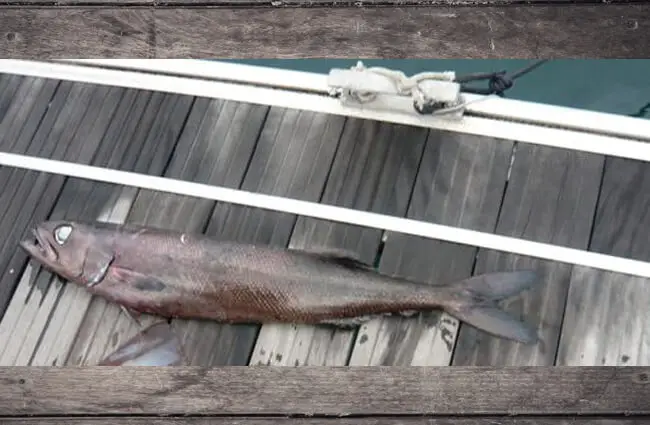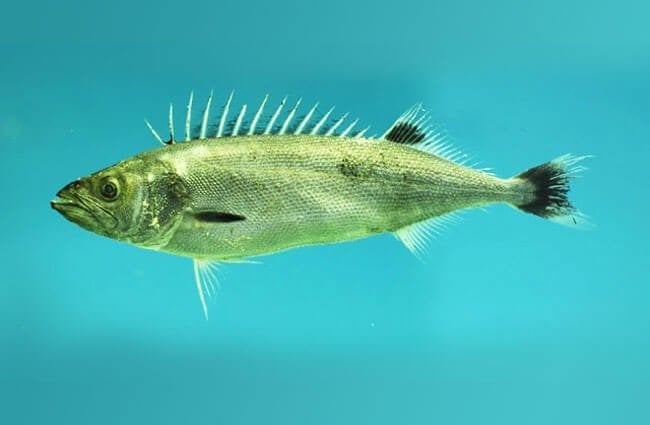The Enigmatic Oil Fish: A Deep Dive into the World of Ruvettus pretiosus
The ocean’s depths conceal a wealth of unusual creatures, and among the most intriguing is the oil fish, scientifically known as Ruvettus pretiosus. Often overlooked, this deep‑sea dweller holds a surprising number of secrets, from its unique physiology to its unexpected role in human culinary traditions. This article provides a comprehensive exploration of the oil fish, covering its natural history, behavior, ecological role, and interactions with humans.

What is an Oil Fish?
The oil fish isn’t a single species, but a name commonly applied to several species within the Ruvettus genus, all belonging to the family Trachyrincidae. Ruvettus pretiosus is the most commercially important and widely recognized as the “oil fish”. These fish are characterized by their elongated, slender bodies, relatively small heads, and large, sensitive eyes—adaptations for life in the dark depths of the ocean. What truly sets them apart, however, is the remarkable concentration of oil within their muscle tissues – hence the name.
Habitat and Distribution
Oil fish are bathypelagic inhabitants, meaning they live in the deep, open ocean, typically between 500 and 1500 meters beneath the surface. Their distribution is remarkably widespread, spanning across all major oceans, though they’re more common in tropical and subtropical waters. Key areas where they are found include the Gulf of Mexico, off the coasts of Japan, South Africa, and the Canary Islands. They tend to congregate in areas with underwater canyons and seamounts, offering access to prey and favorable currents. Their depth preference makes direct observation difficult, and much of what we know about their habitat comes from fishing bycatch and occasional deep‑sea explorations.

Evolutionary History
The evolutionary origins of oil fish trace back to the order Lampriformes, a diverse group of ray‑finned fishes characterized by their unique body structures and lifestyles. Fossil evidence suggests that the ancestors of Ruvettus were likely more shallow‑water dwellers, gradually adapting to deeper environments over millions of years. The development of their oil‑rich tissues is believed to be an adaptation to reduce density and improve buoyancy in the water column, allowing them to conserve energy while foraging in the deep sea. The evolution of their sensory systems, especially their large eyes, played a critical role in navigating and hunting in the darkness. Studying their genetics provides further insight into their relationships with other deep‑sea fishes and their evolutionary trajectory.
Diet and Feeding Behavior
Oil fish are opportunistic predators, feeding on a variety of deep‑sea creatures. Their diet primarily consists of crustaceans, cephalopods, and smaller fishes. They are not actively pursuing fast‑moving prey; instead, they are ambush predators, using their sensitive eyes and lateral line system to detect the movements of potential meals. Their mouths are relatively small, but they can expand significantly to engulf larger prey. They have a simple digestive system, well‑suited for processing the protein‑rich diet common in the deep sea. Analysis of stomach contents provides valuable information about their feeding preferences and the composition of the deep‑sea food web.
Reproduction and Life Cycle
The reproductive biology of oil fish remains somewhat mysterious, due to the difficulty of studying them in their natural environment. They are believed to be broadcast spawners, releasing eggs and sperm into the water column for external fertilization. The eggs are pelagic, meaning they float freely in the ocean. The larvae undergo a period of development, feeding on plankton before maturing into juveniles. Oil fish are relatively slow‑growing and long‑lived, with estimates suggesting they can live for several decades. Reaching maturity also takes a considerable time, likely contributing to their vulnerability to overfishing. The precise timing of spawning events and the factors influencing reproductive success are still under investigation.

Ecological Role and Interactions
Oil fish play an important, though often overlooked, role in the deep‑sea ecosystem. As predators, they help to regulate populations of crustaceans and other invertebrates. They also serve as prey for larger deep‑sea fishes and marine mammals. Their oil‑rich tissues represent a significant energy source for predators. They are an integral part of the deep‑sea food web. Their presence and abundance can influence the structure and functioning of the entire ecosystem. Investigating their interactions with other species provides valuable insights into the complexities of the deep‑sea environment.
Oil Fish and Humans: A Complex Relationship
Historically, oil fish were not directly targeted by fisheries. They were primarily caught as bycatch in fisheries targeting other deep‑sea species. However, their unique oil content, prized for its flavor and texture, led to the development of a specialized fishery in the 20th century. The oil is used in culinary applications, particularly in the production of escabeche and other preserved fish dishes. In some cultures, the oil is also believed to have medicinal properties. However, consumption of oil fish can sometimes cause digestive issues, due to the indigestible wax esters present in their oil.

Conservation Status and Threats
The conservation status of oil fish is a matter of ongoing debate. While not currently listed as endangered, many populations are believed to be overfished or depleted. The slow growth rate and late maturity of oil fish make them particularly vulnerable to overexploitation. Bycatch in other fisheries also poses a significant threat. Climate change and ocean acidification may also impact their habitat and food sources. Effective management strategies, including catch limits, bycatch reduction measures, and habitat protection, are crucial for ensuring the long‑term sustainability of oil fish populations. Ongoing research and monitoring are essential for assessing the effectiveness of these measures.
Encountering an Oil Fish
Due to their deep‑sea habitat, encountering an oil fish is rare for most people. However, if you are involved in deep‑sea fishing or research, you may come across one as bycatch. If you catch an oil fish, it’s important to handle it with care. Its oil can stain clothing and surfaces. It’s also important to report your catch to fisheries authorities. Avoid consuming large quantities of oil fish, as it may cause digestive upset.
Caring for Oil Fish in Captivity
Maintaining oil fish in captivity presents significant challenges due to their deep‑sea habitat and specialized needs. A large tank with cold, dark conditions is essential. Providing a diet that mimics their natural prey is crucial. Maintaining water quality and preventing disease are also critical. It’s important to provide ample space for them to swim and exhibit natural behaviors. Oil fish are sensitive to changes in temperature and pressure, so maintaining a stable environment is essential. Close monitoring of their health and behavior is crucial for ensuring their well‑being.
Fascinating Facts About Oil Fish
- The oil content of oil fish can reach up to 90% of their muscle tissue.
- The wax esters in their oil are indigestible by humans and can cause digestive issues.
- Oil fish have evolved large eyes to help them see in the dark depths of the ocean.
- They are found in all major oceans, but are more common in tropical and subtropical waters.
- Oil fish can live for several decades, but are slow‑growing and late‑maturing.
- They play an important role in the deep‑sea food web.
The oil fish, a remarkable creature of the deep, continues to fascinate scientists and culinary enthusiasts alike. Understanding its biology, ecology, and interactions with humans is crucial for ensuring its long‑term survival and preserving the biodiversity of the deep‑sea ecosystem.

![Red Angus Closeup of a beautiful Red Angus cowPhoto by: U.S. Department of Agriculture [pubic domain]https://creativecommons.org/licenses/by/2.0/](https://animals.net/wp-content/uploads/2020/03/Red-Angus-4-238x178.jpg)




![Red Angus Closeup of a beautiful Red Angus cowPhoto by: U.S. Department of Agriculture [pubic domain]https://creativecommons.org/licenses/by/2.0/](https://animals.net/wp-content/uploads/2020/03/Red-Angus-4-100x75.jpg)

